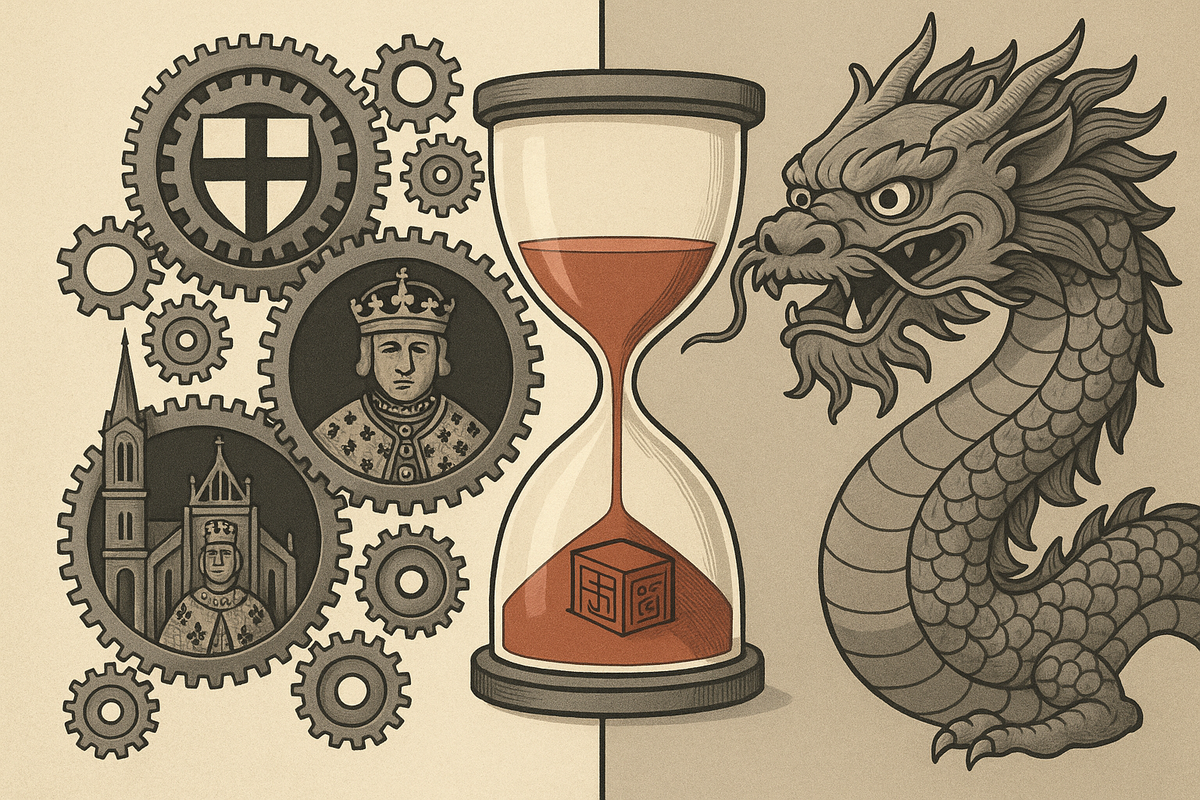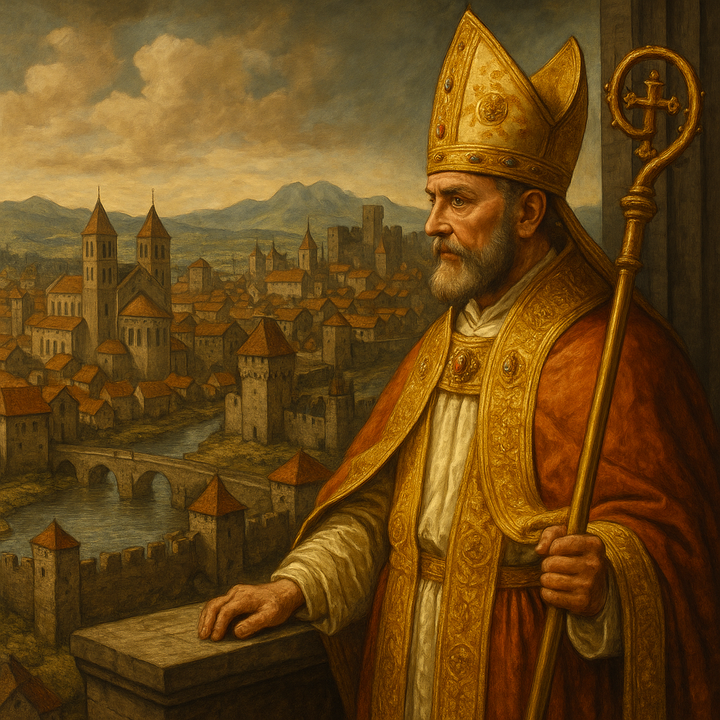How Ancient China achieved what Habsburgs couldn’t
Hegemonism vs Balance of Power

States are often anthropomorphized in public discourse — especially in propaganda. Conflicts between nations are portrayed as if they were disputes between neighbors, and the state itself is likened to an extended family.
In reality, states have little in common with human beings. They are superhuman entities — Leviathans — whose existence follows fundamentally different rules. For instance, we’ve previously argued that states have an unlimited lifespan and exhibit low infant mortality, unlike biological organisms or machines (see here).
Unlike individuals, who are bound by laws and regulations — the violation of which may bring punishment — states operate in an anarchic system. Scholars have long tried to understand how such systems evolve, and more importantly, why in some cases one state dominates the rest, while in others a balance of power emerges and persists.
In The Prince, Machiavelli observed that in the West, it was easy to conquer a neighboring principality but hard to keep it; whereas in the East, conquest was harder, but holding on to it was easier. In other words, in medieval Europe, state expansion often led to weakening of the state, while in ancient China (taken as an example, our focus here is on the period 700–200 BCE), expansion typically strengthened it.
Why was this the case? That’s the question posed by Jørgen Møller [1].
Previous scholarship has explored various explanations — from geographical differences between continental and maritime systems to sheer randomness and the role of individual leaders. Møller’s article introduces a new model, arguing that to understand the dynamics of the international system, we need to look inside the state — at its internal structure.
Let’s start with Europe. Many modern scholars view Europe’s long-term fragmentation during the Middle Ages and early modern period as a key factor in its eventual global dominance. This raises two major questions: Why did this fragmentation arise in the first place (we addressed this here) and why did it persist for so long?
European history is full of attempts to unify the continent. One of the most prominent and long-lasting efforts came from the Habsburgs in the 16th century. Emperor Charles V ruled over Spain, its American colonies, Austria, the Low Countries, and held the crown of the Holy Roman Empire. He commanded the Spanish tercios — the most formidable military force of the time, considered nearly unbeatable. Unsurprisingly, his life’s mission became the creation of a Monarchia Universalis — a world empire, or more specifically, a pan-European empire. Habsburg efforts to dominate Europe continued until the end of the Thirty Years’ War in 1648 — but always ended in failure.
There were two main reasons. First, the Habsburg lands were scattered across vast territories, with weak interconnections that made coordinated military campaigns difficult. More importantly, the Habsburgs lacked full authority even within their own territories. Any attempt to raise taxes or centralize administration met fierce resistance from local elites — from hereditary nobles to autonomous cities. This internal resistance often escalated into open conflict, as in the Eighty Years’ War, which ultimately led to Dutch independence. External rivals like England and France frequently supported these rebellious factions, further undermining Habsburg ambitions.
Zooming out, this pattern reflects a broader feature of European states between 1200 and 1800: their composite nature. Rulers had to constantly negotiate and compromise with powerful internal actors. Who were these actors? First, the Catholic Church — a transnational institution with immense authority, wealth, and a willingness to meddle in secular politics, particularly in Germany and Italy. Second, landed nobles, who controlled vast estates and had longstanding contractual relationships with the crown. Third, free cities, enriched by trade and crafts, with their own distinct agendas.
The expansion of such composite states faced two structural problems. First, mobilizing resources for conquest required bargaining with these internal factions — often making concessions that weakened the state in the long run. Second, successful conquest only increased internal fragmentation: the newly acquired territories brought with them more nobles and cities to negotiate with.
Now contrast that with what happened in China between 656 and 256 BCE — during the Spring and Autumn and Warring States periods. Over a hundred small principalities vied for power, with the number gradually decreasing until unification under Qin Shi Huang. Chinese states were unitary — the ruler had few internal checks on power. This made it easier to integrate conquered territories, which in turn became launchpads for further expansion. In Europe, territorial gains often diluted power; in China, they amplified it — making unification almost inevitable.
If you found this article compelling, we have bad news. It embodies nearly every flaw of the historical approach we’ve been criticizing — and which we consider, frankly, outdated (see here).
First, the article offers no clear definitions. What exactly is the “international system”? Where are its boundaries? In the Habsburg era, does it include Turkey? If so, does it also include Persia and Oman? Without clear boundaries, we can’t even know how many such “systems” existed throughout human history — surely many — so basing grand conclusions on just two examples seems wildly insufficient.
Second, the argument relies on two cherry-picked cases. Without a proper definition of the system in question, it’s unclear whether these examples are representative or even relevant.
Third, there’s no modeling to test the hypothesis, nor any structured data used as input for such a model.
Finally, there’s no serious reflection on why Europe and China followed different paths. The article merely shifts the question of balance and dominance to internal factional strength — but leaves the core issue unresolved.
Although the article was published in 2014, it just as easily could have been written 100 or even 200 years ago. One would hope historical scholarship has moved forward since then.
Reference:
[1] Møller, J. (2014). Why Europe avoided hegemony: a historical perspective on the balance of power. International Studies Quarterly, 58(4), 660–670.



Comments ()